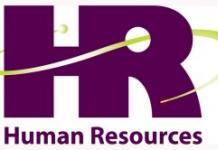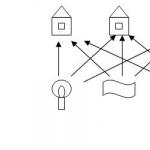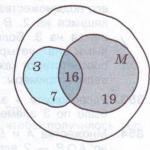HR management problems occur in many enterprises, so the demand for modern HR management systems is very high. Today in organizations there is a discrepancy between the growing need to ensure competent personnel management and the state of the services that are responsible for this work. It is necessary not only to change the regulations of HR departments, but also to make adjustments to the personnel management model.
HR problems
Human resource management functions can be dispersed in an organization between several departments that are directly or indirectly involved in solving personnel issues.
Coordination is very important in the work of such departments; its absence prevents effective personnel management. It is the HR department that must take on the work of managing employees in the enterprise. The tasks of the HR service include the selection of personnel at all levels and their placement. But in practice, only in some organizations HR officers work effectively.
 In organizations, there is often a clear contradiction between the goals that the HR department proclaims and the functions that it actually performs. The head of the enterprise's HR department lists in the list of things the department is busy with, personnel control, and carrying out activities to increase employee motivation. But in reality, the department rarely deals with the processes listed above. As practice shows, the solution to many personnel issues depends on the management of the enterprise, but a preliminary analysis of the situation is necessary.
In organizations, there is often a clear contradiction between the goals that the HR department proclaims and the functions that it actually performs. The head of the enterprise's HR department lists in the list of things the department is busy with, personnel control, and carrying out activities to increase employee motivation. But in reality, the department rarely deals with the processes listed above. As practice shows, the solution to many personnel issues depends on the management of the enterprise, but a preliminary analysis of the situation is necessary.
There is another problem related to personnel management, which is often found in Russian companies. We are talking about the lack of a unified system for working with personnel. Such a system involves studying the abilities of specialists working in the organization, offering options for their professional development and career growth.
Management team of the enterprise
Not all managers can properly organize the work of the HR department. An entrepreneur must know the current problems of personnel management, this will allow him to avoid the most common mistakes. The problem is that work with employees is often initiated by management precisely in order to improve the situation, but it keeps getting worse and the company is losing its position in the industry.
Reviewing employee management practices can significantly improve the health of your team. But here it is necessary to take into account the fact that not all workers will accept the new methods. If a conflict arises between management and part of the staff, the situation within the company may worsen.
Many HR management problems in an organization can be avoided if timely measures are taken. The most frequently encountered problems include the following:
- dismissal of qualified specialists;
- lack of labor discipline, low performance discipline of employees;
- low qualifications of workers and some managers;
- conflicts and negative atmosphere in the team;
- low level of motivation;
- low level of staff initiative;
- conflict between management and employees.
Every manager must make an analysis of the current situation and then make a decision.
Personnel development programs
 The successful development of a company depends on the level of qualifications of its employees. The skills of specialists can be improved by paying attention to training and strategic planning. Retraining of specialists and advanced training are crucial for the effective operation of a company, but not all company managers understand this. But the issue of personnel training is very important. We are talking about both large organizations and small firms. It is necessary to make employee training a priority; then the company will be provided with qualified specialists.
The successful development of a company depends on the level of qualifications of its employees. The skills of specialists can be improved by paying attention to training and strategic planning. Retraining of specialists and advanced training are crucial for the effective operation of a company, but not all company managers understand this. But the issue of personnel training is very important. We are talking about both large organizations and small firms. It is necessary to make employee training a priority; then the company will be provided with qualified specialists.
It is imperative to improve the qualifications of enterprise management. We are talking about managers heading the HR, marketing, etc. departments. The set of programs must correspond to modern realities. It’s good if the organization’s line managers complete programs that teach how to evaluate management effectiveness. Such training helps managers learn to use labor resources to the fullest extent possible in their work. This is very beneficial for the organization, because the competitiveness of the company increases not due to additional injections of capital, but due to the effective organization of the labor process.
Personnel development needs to be planned. It is necessary to take into account the natural movement of personnel that occurs due to the dismissal of employees, retirement of specialists, and conscription into the army. The HR department must prepare an equivalent replacement in advance, increase the level of training, unite the team and increase the team's potential.
Much attention has recently been paid to improving labor efficiency. This problem affects ordinary employees, managers and technical workers. It is worth considering the problems of the lower level separately - they have their own characteristics.
Today, there are many practical methods to help effectively manage personnel. Progress in management can be achieved by constantly monitoring existing problems.
The most common HR problems
The main problems of personnel management may be the following: 
- "Best student" The problem is that the best specialist becomes the head of the department. But he only knows his job, having excellent knowledge of his field, and has a general idea of other areas. This can cause errors when managing people in an enterprise.
- "My guy." Managers often have to overcome employee resistance. And workers may get tired of conflict situations at work.
- Positive projection. The problem is that managers put themselves in the employees' shoes and then think about what they would do in the person's shoes. This cannot be done, because each person has his own view of the situation. In addition, each employee has individual character traits.
- "Circus Star" Many company owners believe that an employee must work hard to earn a salary.
- Big difference in salary. We are talking about a significant gap between the income of the management and staff of the company. The gap can be significant, in which case the income differs significantly.
- "Waiting for a Hero" A number of managers, interacting with personnel, seem to be waiting for a hero to appear in the department who will solve all the problems in an instant. This ideal employee never gets sick, he is ready to work until night and does not demand better working conditions. But in practice, such employees cannot be found, and the manager expresses dissatisfaction with the current employees. All this only exacerbates conflicts in the enterprise.
- A number of managers do their best to maintain a distance between themselves and the specialists working in the department. Personnel management is based on strict requirements; the manager often makes claims. This leadership style is not conducive to creating a comfortable atmosphere. The staff is moving away from the leader.
- Personnel turnover. The reasons may vary. Specialists quit due to low pay. In addition, dismissal is driven by the manager’s inability to manage people and ineffective organization of the work of specialists. Organizations may avoid hiring young professionals, and when they are hired, the atmosphere in the team may be so negative that the newcomer quits. This is how the company loses promising specialists.
These personnel management problems are relevant for many companies. A competent leader, using theoretical knowledge and applying modern practical skills, will cope with all unpleasant situations that arise in the team.
Send your good work in the knowledge base is simple. Use the form below
Students, graduate students, young scientists who use the knowledge base in their studies and work will be very grateful to you.
Posted on http://www.allbest.ru/
Moscow Institute of Humanities and Economics
Kaluga branch
Test
Course: "Human Resources Management"
Prepared by: Tatarenkov A.V.
Checked by: Assoc. Letnik V.V.
Kaluga 2016
- Introduction
- 1. Modern problems of personnel management
- 2. The essence of the subsystem and elements of the personnel management system, their relationship and interaction
- 3. Test
- List of used literature
Introduction
Personnel management is a vital strategic function formed, under the influence of many factors, into an independent structure.
Trade union intervention led to the creation of national social insurance systems, the establishment of minimum wages, and restrictions and reductions in working hours. Compliance with these requirements fell on HR departments.
The chosen path of Russia's transition to the market did not live up to the hopes placed on it. The main results of several years of radical economic reform are more than well known: the decline in production, the impoverishment of the people; unemployment, strikes, unfavorable demographic changes, especially in the central regions of Russia, etc. The severance of habitual economic ties further enhances the manifestation of all of the above and other negative processes.
The evolution of the management system that emerged in the first stages of economic reform occurs in the specific conditions of the transition period. Its important features are: instability of connections between enterprises and insufficient coordination of their activities; freedom of economic activity due to the existing legal system; instability of the regulatory sphere and economic policy.
Let's add to this the lack of information in almost all areas of economic life. As a result, a climate of uncertainty arose when the activities of enterprises were aimed mainly at everyday survival. Therefore, in these conditions, effective management of the enterprise and human resources, in particular, becomes especially important.
In order not to repeat the mistakes of the past, it is very important to make significant adjustments to the economic strategy and implement a number of organizational and structural decisions.
1. Modern problems of personnel management
In the modern world, the main challenges facing organizations are new ones. The main ones are: stimulating the work of hired personnel, preventing “brain drain”, indexing wages in conditions of inflation, ensuring that the level of qualifications of personnel meets the strict requirements of the modern economy and, finally, strengthening the sense of belonging to the company among staff, etc.
But even now there are contradictions between the declared goals and functions of personnel management departments, so the list of responsibilities includes actions for accounting, control, motivation of personnel, regulation of relations between management and personnel, but in reality the functions of personnel management services, judging by the facts, turn out to be rolled up. The heads of these services assess their role in managing social personnel processes as secondary, believing that everything depends on the management of the enterprise.
It is known that the successful development of production in modern conditions largely depends on the competitiveness of personnel. And it is achieved by constant training of personnel, improvement of their qualifications and strategic determination of their number and professional guidance at a given moment and in a given production. The narrow skills of the management corps, especially its senior management, negatively affected the transition to market relations from the very beginning of the reforms. It turned out that “many managers failed to organize the work of the institutions under their control in general and orient it towards studying and meeting consumer demand in particular. A great difficulty for them was determining the directions for using resources, first of all, this applies to such important resources as personnel , fixed assets, financial resources."
This gives grounds to assert that the key problem for the vast majority of Russian enterprises is the problem of ineffective personnel management. Now is the time when it is necessary to pay closer attention to systematic training and, especially, retraining of qualified specialists. This will make it possible to respond more quickly and effectively to changes in the country, to strengthen the elements of stability, solidity, representativeness, sober calculation, and rejection of excessively risky speculative play in market activities.
The educational services market turned out to be practically unbalanced with the real needs of the skilled labor market. The quality level of enterprise employees is significantly inferior to the requirements imposed on the international labor market. The personnel management system at most enterprises does not correspond to the strategy of market reforms, which significantly hinders the possibility of implementing programs of sustainable stabilization, revitalization of production and structural restructuring of the economy, improving the quality and competitiveness of Russian products.
It is necessary to train and significantly improve the qualifications of the management corps in management, marketing, innovation, personnel management and a number of other disciplines, taking into account the peculiarities of the current economic situation and the Russian market. The formation of a business services industry should become one of the primary problems of structural investment policy.
Among the most pressing problems, the following should also be noted: the departure of qualified specialists, low performance and labor discipline of personnel, insufficient qualifications of personnel and individual managers, unsatisfactory moral and psychological climate, low level of motivation of employees, and, as a consequence, insufficient initiative of employees in solving production problems. problems, confrontation between administration and staff.
It should also be noted that there is an erosion of traditional values, which leads to serious disturbances in personal beliefs and values. Stress, pressure and uncertainty are increasingly present in most forms of organizational life. This has significantly complicated the system of motivation and incentives for employees, primarily in connection with hiring on short-term contracts, setting various preconditions (including a probationary period), strictly linking material incentives to profits and other factors.
When revising personnel management methods that do not meet the state of the external environment, management may encounter a conflict generated by the rejection of new methods by the organizational culture of the company due to the conservatism and inertia of some of the team. Such a conflict can be quite painful and destructive in its consequences.
Thus, K. Davis identified three groups of reasons for resistance to innovation. The basis of all economic reasons is the fear of loss of earnings, which creates an anti-innovation attitude in the employee. hired personnel qualifications incentives
Regarding the personal reasons that encourage people to resist the innovation process, we can say that the main one is the individual’s resistance to devaluation, which the innovation process very often brings with it.
In the group of anti-innovation barriers that are socio-psychological in nature, most of the reasons are based on a person’s reaction to the innovative processes that accompany many organizations, a kind of encroachment on his psychological comfort.
These and some other problems raise the question of improving the personnel management system for managers. However, we often have to deal with the fact that, trying to put the work with personnel in the company at the proper level, managers make a number of mistakes that do not allow them to achieve the goals for which, in fact, the work with personnel was started.
To eliminate these types of shortcomings, personnel development planning is necessary. First of all, this is planning the natural movement of personnel - retirement, dismissal due to illness, due to study, military service, etc. This is not difficult to do, but it is important to prepare an equivalent replacement in a timely manner. What is more difficult is to strengthen the potential of the team and increase its competitiveness.
There are several ways to do this, including: careful selection of personnel, systematic improvement of their qualifications, creation of conditions for the most effective manifestation of their abilities and development of a methodology for assessing the actual effectiveness of the team.
Many commercial structures in Russia are now taking a different path. Instead of intensifying the work of adapting teams to the conditions of economic reforms, taking care of ensuring a painless psychological restructuring of each person, especially experienced specialists, workers are sometimes mercilessly fired as they have not adapted to the new requirements. This approach is a manifestation of short-sighted policy. After all, any replacement of an employee is an economically expensive undertaking. This damages the company's reputation.
The problem of “obsolescence” occupies a special place in the process of professionalization of management. "Obsolescence" occurs when an individual uses viewpoints, theories, concepts and methods that are less effective in solving a problem than others currently existing. Of course, not every example of a firm's HR inefficiency is due to "obsolescence." Laziness, lack of understanding, and overload with other responsibilities can also lead to ineffectiveness. But the cost to a firm of developing and adopting second-rate solutions to emerging problems is likely much greater than the costs required to overcome the obsolescence of its workforce.
Management practice also shows that in any company, as a result of a combination of different reasons, the presence of conflicts is inevitable. Conflicts often arise due to staff dissatisfaction with the manager’s assessment of their work. In cases of very serious conflicts, there may even be a shift in organizational goals.
It is significant that in the activities of the leader himself, as the main subject of management, there are various contradictions associated with undesirable trends in people’s behavior. The difficulty in assessing these phenomena lies in their heterogeneity.
It should be noted that recently in our country some work has been carried out to train high-class managerial personnel, various business schools have been organized, and a lot of special literature, although of varying quality, by domestic and foreign authors has been published.
However, in the literature on management topics, as a rule, publications of an educational and educational-methodological nature predominate, considering mainly the history and fundamentals of management, special management issues (financial management, personnel management, situational and systemic approaches to management, sociology of organizations, marketing). In this sea of publications on management problems, there is clearly not enough literature for specialist managers and senior management.
There are also problems at the lower level of personnel management, which have their own aspects and characteristics. “An important point in their assessment is that in their mentality and roles, lower managers belong to managers, and vice versa, the situation contributes to the fact that their psychology is closer to that of workers. Such duality of position in the company often leads such managers to a state of stress.”
Lately there has been a lot of talk about the fact that the roots of the problems of most Russian enterprises lie in ineffective management. What effective management is, each of the enterprises that managed to adapt to new conditions understands in its own way. Everyone finds their own levers of control and implements their own management principles. But until now, the valuable experience developed by each of the enterprises remained only its experience.
At the same time, there is also positive experience that needs to be studied, refined and recommended for implementation. The results of the activities of many enterprises and the accumulated experience of their work with personnel show that the formation of production teams and ensuring high quality personnel potential are decisive factors in production efficiency and product competitiveness.
Problems in the field of personnel management and daily work with personnel, according to experts, will be constantly in the focus of management's attention in the near future. In the future, with the development of scientific and technological progress, the content and working conditions will become more important than material interest.
2. The essence of the subsystem and elements of the personnel management system, their relationship and interaction
The methodology of personnel management involves consideration of the essence of personnel as an object of management, the process of shaping the behavior of individuals that corresponds to the goals and objectives of the organization, methods and principles of personnel management.
The personnel management system involves the formation of goals, functions, organizational structure of personnel management, the establishment of vertical and horizontal functional relationships between managers and specialists in the process of justification, development, adoption and implementation of management decisions.
Personnel management technology includes: organizing recruitment, selection, reception of personnel; his business assessment, career guidance and adaptation; education; management of business career and professional advancement; motivation and work organization; conflict and stress management; ensuring the social development of the organization, releasing personnel, etc. This should also include issues of interaction between the organization’s leaders and trade unions and employment services, and personnel safety management.
The basis of the concept of personnel management currently consists of: the increasing role of the employee’s personality; knowledge of his motivational attitudes; the ability to form and direct them in accordance with the tasks facing the organization.
Changes in the economic and political systems in our country simultaneously bring both great opportunities and serious threats to every individual, testing the sustainability of its existence and introducing a significant degree of uncertainty into the life of almost every person. Personnel management in such a situation acquires special significance, since it allows us to implement and generalize a whole range of issues of adapting an individual to external conditions, taking into account the personal factor in building an organization’s personnel management system. In summary, we can distinguish three factors that influence people in an organization.
1. The hierarchical structure of the organization, where the main means of influence are relations of power - subordination, pressure on a person from above through coercion, control over the distribution of material goods.
2. Culture, i.e., joint values, social norms, behavioral guidelines developed by a society, organization, group of people, which regulate the actions of an individual, force the individual to behave one way and not another without visible coercion.
3. The market is a network of equal relations based on the purchase and sale of products and services, property relations, and the balance of interests of the seller and the buyer.
These influencing factors are quite complex concepts and in practice are rarely implemented separately. Which of them is given priority is the shape of the economic situation in the organization.
During the transition to a market, there is a slow move away from hierarchical management, a rigid system of administrative influence, and practically unlimited executive power to market relations and property relations based on economic methods. Therefore, it is necessary to develop fundamentally new approaches to the priority of values, “the main thing within the organization is the employees, and outside it - the consumers of the products. It is necessary to turn the consciousness of the worker to the consumer, and not to the boss; to profit, and not to waste; to initiative, and not to mindless execution, move to social norms based on common economic sense, without forgetting about morality. Hierarchy will fade into the background, giving way to culture and the market.
New personnel management services are created, as a rule, on the basis of traditional services: the personnel department, the department of labor organization and wages, the department of labor protection and safety, etc. The tasks of the new services are to implement personnel policies and coordinate labor resource management activities in the organization . In this regard, they begin to expand the range of their functions and move from purely personnel issues to the development of systems for stimulating labor activity, managing professional advancement, preventing conflicts, studying the labor market, etc.
Of course, the structure of the personnel management service is largely determined by the nature and size of the organization and the characteristics of the products produced. In small and medium-sized organizations, many personnel management functions are performed primarily by line managers, and in large ones, independent structural units are formed to implement the functions.
A number of organizations are creating personnel management systems that unite under the unified leadership of the deputy director for personnel management all departments related to work with personnel. An organization's personnel management system is a system in which personnel management functions are implemented. It includes a line management subsystem, as well as a number of functional subsystems that specialize in performing homogeneous functions (Fig. 1).
The line management subsystem manages the organization as a whole and manages individual functional and production departments. The functions of this subsystem are performed by: the head of the organization, his deputies, heads of functional and production departments, their deputies, foremen, and foremen.
Rice. 1. "Composition of subsystems of the organization's personnel management system"
Functional subsystems combine homogeneous, similar in content functions in the most important areas of work with personnel. The bearers of the functions of these subsystems are individual functional units and officials: heads of these units, their deputies, specialists, and other employees. Depending on the size of organizations, the composition of divisions changes: in small organizations one division can perform the functions of several subsystems, and in large ones, as a rule, the functions of each subsystem are performed by a separate division.
The full list of HR functions covers a wide range of activities and is open to new forms of work. According to one survey, 95% of firms in the United States carried out personnel selection and hiring within the framework of the personnel department (the rest, mainly small ones, relied only on line managers in this matter), 88% performed the functions of organizing wages and 90% - other types of compensation , 72% were in charge of safety issues, 69% carried out planning and activities for social and personnel development, 74% were engaged in labor force forecasts, 65% were involved in sociological research at enterprises, 41% analyzed the dynamics of labor productivity, 70% of firms organized social and cultural life.
Today, personnel departments implement many functions that were previously dispersed among economic, production, technical and other departments. Their integration in one place indicates a real increase in the influence of human resources in the practice of intra-organizational leadership. This service structure allows the administration to actually manage this important resource and solve complex problems of increasing production efficiency.
A survey of specialists showed that currently the greatest efforts of personnel departments (in terms of time spent) are aimed at improving labor relations, selecting candidates for vacant positions, developing and implementing training programs and social development programs, as well as organizing wages. Moreover, not in all cases they can independently make appropriate decisions, but share this responsibility primarily with line managers and other services. Thus, today it is not accounting, but substantive analytical and organizational aspects of activity that are increasingly predominant. The professional level of HR specialists has increased sharply. They include psychologists, conflict experts, specialists in management, teaching methods (teachers) and labor relations, whose training is carried out on a large scale at universities. Out of 100 personnel management specialists, on average, 12 are specialists in training, professional development and social development, 37 are specialists in human resources and 38 are general managers in human resources.
In recent years, a number of new professions and specialties have emerged in intra-organizational management, including recruiters (recruiters) and interviewers (psychologists who interview job applicants). Methodists and instructors, career consultants, career guidance and organizational planning specialists.
Currently, in the United States, many HR functions for companies are performed by specialized consulting organizations, training centers, executive search firms and firms providing temporary workers, i.e., management infrastructure organizations. According to a survey of management consulting firms, 25% are involved in HR streamlining. In the USA, along with organizations providing a wide range of personnel services, specialized companies have acquired the greatest importance.
Thus, information Sciences acts as a leading developer of management information subsystems for working with personnel, at the same time providing various services for their implementation and conducting extensive consulting work. A large group of companies specializes in building payment systems and/or other types of remuneration (social benefits). Among them, we can distinguish companies that provide complex services and companies that provide consulting on certain types of remuneration (benefits) and on certain methods of calculating them (for example, on analytical assessment of work and tariffication). Along with consultants, research firms and information centers play an important role.
A new phenomenon in the field of personnel services is the separation of the function of selecting key personnel, managers and specialists into a special type of infrastructure organizations (execuftVe search firms). Some of them count hundreds of thousands of specialists recommended and hired by clients. And the number of firms themselves, for example, in the USA, is estimated at about 1.5 thousand. The most significant area of human resources services is the area of professional training and advanced training. It accounts for 20 to 40% of the total amount spent by organizations in this area. Moreover, an extensive market for educational materials, programs, and technical teaching aids has also been created.
3. Test
In what case does the labor motive form?
a) if work activity is the main condition for obtaining benefits;
b) if work experience is a criterion for distribution relations;
c) if high status provides an opportunity to receive benefits.
List of used literature
1. Organizational personnel management / ed. prof. AND I. Kibanova. - M., 2010.
2. Armstrong M. Practice of human resource management. - St. Petersburg. : Peter, 2009.
3. Bakirova G.Kh. Personnel management training. St. Petersburg, 2004.
4. Borisova E.A. Personnel assessment and certification. St. Petersburg, 2003.
5. Bossidy L., Charan R. Execution. System for achieving goals = Execution: The Discipline of Getting Things Done. - M.: "Alpina Publisher", 2012.
6. Glazov MLM. Personnel management: analysis and diagnostics:! personnel management. - St. Petersburg, 2007.
7. Dyatlov V.A., Kibanov A.Ya., Pikhalo V.T. Personnel management: textbook. - M.: Prior, 2004.
8. Egorshin A.P. Personnel Management. - N. Novgorod: NIMB, 2007.
9. Ivantsevich J.M., Lobanov A.A. Human resources management. - M., 1993.
10. Komkona O.S. Reorganization of the enterprise. Personnel management during the period of reorganization. - M., 2006.
11. Commentary on the Labor Code of the Russian Federation. - M., 2003.
12. Cornelius N. HR management. - M.: Balance Business Books, 2005.
13. Kibanov A.Ya., Durakova I.B. Organizational personnel management / ed. prof. AND I. Kibanova. - M., 2010.
14. Magura M.I., Kurbatov M.B. Personnel training as a competitive advantage. - M., 2004.
15. Mordvin S.K. Personnel Management. Modern Russian practice. - M., 2005.
16. Ulrich D. Effective personnel management: the new role of the HR manager in the organization = Human Resource Champions: The Next Agenda for Adding Value and Delivering Results. - M.: "William", 2006.
17. Personnel management: textbook / ed. T.Yu. Bazarova, B.L. Eremina - M.: UNITY, 2005.
18. Shapiro S.A. Personnel management as a type of business activity. - M., 2006.
19. Shekshnya S., Ermoshkin N.N. Strategic HR management in the Internet era. - M., 2002.
20. Shinkarenko O.N. Organizational personnel management in the implementation of ISO 9000:2000 series standards. -M., 2007.
21. Hugheslid M.A., Ulrich D., Becker B.I. Measuring the performance of the HR department. People, Strategy, and Performance = The HR Scorecard: Linking People, Strategy, and Performance. - M.: "William", 2007.
Posted on Allbest.ru
...Similar documents
The essence and importance of labor incentives in personnel management of an organization. Formation of wages in the organization. Analysis and improvement of technology for stimulating the labor of personnel of Komsomolskgorgaz LLC. Enterprise management structure.
course work, added 09/13/2010
Labor utilization analysis. Labor productivity analysis. Payroll analysis. Rational use of enterprise personnel. Analysis of personnel qualification level. Analysis of forms, dynamics and reasons for personnel movement.
test, added 09/12/2006
Methods of stimulating the work of various categories of enterprise personnel. Brief description of Norilsknickelremont LLC. Analysis of labor and wages at the enterprise. Bonus and incentive systems for workers, employees, and management personnel.
thesis, added 05/26/2012
Study of a set of measures to assess workers' labor efficiency. Analysis of the process of establishing compliance of the qualitative characteristics of personnel with the requirements of a position or workplace. Professional and business criteria for personnel assessment.
test, added 08/06/2013
The essence of a technocratic approach to personnel management. The role and importance of staff motivation. Types of incentives in the organization. Analysis of the socio-economic state of LLC "TD Talosto". Improving the system of personnel incentives.
thesis, added 11/27/2012
Consideration of the essence and significance of incentives for staff remuneration. Study of the main forms of the wage system; description of foreign experience in this area. Analysis of the labor incentive system of the enterprise OJSC Pavlovsk Plant named after Kirov.
course work, added 11/24/2014
Formation of instructions for the process of selection and hiring of employees. Personnel management of a modern organization. Certification as a mechanism for assessing the level of personnel qualifications. Formation of a better job profile. Improving work motivation.
thesis, added 08/28/2017
The concept and essence of motivation. Incentives as a way of personnel management. The main types of traditional and modern labor incentives. Assessment of the system of motivation and incentives for personnel at the enterprise. Professional development.
course work, added 10/24/2014
Problems of economics and organization of enterprise personnel management. Efficiency of personnel use. Conditions of personnel management. Economic tools for personnel management. The role and significance of the labor stimulation process.
thesis, added 03/28/2007
Theoretical foundations of the personnel formation system in a modern organization. Modern approaches to education and training of personnel. Legal regulation of employee training in enterprise conditions. Opportunities to improve the level of qualifications of employees.
Posted On 05/19/2018
Belyaeva V. A.
Scientific supervisor: Ph.D., Associate Professor. Miroshnichenko Yu. V.
Kharkov Trade and Economic Institute KNTEU, Ukraine
The relevance of this topic lies in the fact that labor relations cover a wide range of problems related to the organization of the labor process, training and recruitment, the choice of the optimal wage system, and the creation of social partnership relations in the enterprise.
Personnel management in an enterprise is management that is a relatively autonomous and specific subsystem of the overall management system of an organization; a set of interconnected processes for managing human activity; a set of methods of influencing human behavior in the process of work, as well as the very process of interaction between the subject and the object of management.
The problems of personnel management have been studied from various points of view and quite a lot of works have been published on this topic. In particular, the problems of personnel management have been studied by many scientists. Among them: A. V. Alexandrov, L. M. Gatovsky, A. G. Zhuravlev, I. N. Kirpa, G. A. Kovaleva, A. E. Kotlyar, N. V. Kochkina, V. P. Mazyrin, A. N. Neverovskaya, P. A. Papulov, L. N. Ponomarev. But the problem of personnel management is still at the stage of improving management strategy, which does not meet modern enterprise development goals.
The purpose of this article is to study effective personnel management, as well as to develop methodological tools for improving the personnel management system, including proposed models and management techniques used at various levels.
In accordance with the goal, the following tasks are formulated:
1. Identify the main problems of increasing personnel efficiency at the enterprise.
2. Conduct an analysis of existing personnel management systems and present the main directions for their improvement in order to adapt to modern approaches, methods and principles.
At the present stage of research into personnel management, the following main problems in the field of personnel management can be identified: – a new (market) field of activity on the same theoretical and practical basis; – management strategy does not meet modern enterprise development goals, managers do not can use the potential of their subordinates; – understanding of the role and place of personnel management in the economic system does not correspond to the actual volume and nature of the tasks assigned; – the inability of employers to accurately set the “specifications” of the required parameters of employees, from -lack of ability to analyze jobs and determine qualification requirements for jobs, lack of labor market analysis and labor price calculations; – mentality of the subject and object of management, lack of sense of the market; – problems with professional quality - qualification training and retraining of personnel; - the action of anti-market forces (massive organized crime and corruption pose the problem of security and trust with particular severity to the detriment of professionalism in the selection of personnel).
The process of forming an effective human resource management system in a modern enterprise is shown in Fig. 1.

Rice. 1. The process of forming an effective human resource management system in a modern enterprise.
The human resource management system will be effective and contribute to favorable business development if proper management is implemented. In order to successfully manage an organization and avoid problems with personnel management, it is necessary to follow the following principles:
1 Develop a process for making decisions and applying adequate methods for solving problems.
2 Develop the ability to manage yourself and manage a group.
3 Treats staff kindly.
4 Motivate staff.
5 Develop the ability to subtly manipulate employees, take their thoughts, beliefs, and interests into account.
6 A meaningful recruitment and placement process.
Another optimal solution to the company’s personnel management problems may be to involve a hired top manager in management, who includes in his work:
1. Result. This is the square of behavior.
2. Motivation. This is the square of psychology.
3. Team. This is a square of corporate spirit.
4. System.
5. Leadership.
Based on the results of the study of this problem, we can conclude that the formation of an effective human resource management system has become one of the practical tasks, factors, and economic success.
Achieving these conditions will allow us to develop an effective human resource management system in the organization.
Problems in the field of personnel management and daily work with personnel, according to experts, will be constantly in the focus of management's attention in the near future. In the future, with the development of scientific and technological progress, the content and working conditions will become more important than material interest.
Literature:
1. Personnel management / Ed. B.Yu. Serbinovsky and S.I. Samygina. M.: Prior, 2004. – 432 p.
2. Bustard V.V., Polovinko V.S. Personnel management of research and production organizations. - M.: Inform-Knowledge; Omsk, 2005. – from 12.
3. Davidenko, N. Development of managers - the sail of talent management / N. Davidenko, V. Lyakh // Personnel Management. – 2010. – No. 11. – P. 14-17.
4. Ovchinnikova T.I. Place of the personnel management service in the structure of the organization //Enterprise Personnel// -2003 - No. 11. – P. 7-8.
5. “Personnel management.” . // Official website of the magazine. - Access mode http://www.top-personal.ru/.
POSSIBLE PROBLEMS OF THE PERSONNEL MANAGEMENT SYSTEM AT THE ENTERPRISE
Uzakov Ruslan
PROBLEMS OF PERSONNEL MANAGEMENT. WAYS TO SOLUTION THEM
The purpose of the work is to identify the problems that a manager faces in the process of his management activities, as well as to find various options for solving these problems. This topic is relevant in modern production and in the economy in general, because managers who constantly improve their personal educational level and care about the level of qualifications of the company’s employees ultimately grow into the most effective managers and the main potential of any developed state is these educated people.
The success of any organization depends on the effectiveness of the joint work of personnel, their qualifications, professional training and level of education, as well as on working conditions that promote or hinder, on the one hand, the satisfaction of the material needs of the employee, and on the other hand, the highly effective work of the organization as a whole. Personnel management is a very complex and delicate matter and often the problems become more and more complex over time. After all, in order to lead, you need to have knowledge in a variety of fields (management, psychology, strategic planning, and so on). It is important to build a personnel management system at the enterprise that will help solve the company’s problems and get rid of some of the problems of personnel management.
Let's consider the methods and methods that are basic for regulating the process of managing an organization:
1. Financial incentives. Of course, the motivational mechanism of remuneration plays a large role, but a constant increase in the level of remuneration does not contribute to either maintaining labor activity at the proper level or increasing labor productivity.
The use of this method can be useful for achieving short-term increases in labor productivity. Ultimately, a certain overlap or addiction to this type of influence occurs.
2. Improving the quality of the workforce. Sometimes, when setting certain goals, a company is faced with a lack of experience and knowledge among employees and then a decision is made on additional staff training. In order not to constantly encounter this, the enterprise should create a personnel training system. First of all, in order to avoid problems with personnel management already at the initial stage, such work should be entrusted only to a true personnel management professional.
3. Improving labor organization. It contains: goal setting (a correctly set goal through the formation of an orientation toward its achievement serves as a motivating means for the employee), expansion of labor functions (increasing the number of operations performed by one employee), labor enrichment (providing a person with work that would provide the opportunity for growth and creativity , responsibility, including in his responsibilities some functions of planning and quality control of the main and sometimes related products), time research (if a person does not have enough time to do the work well, he will consider that it is not worth spending effort on it), improvement of working conditions (the new level of social maturity of the individual denies the unfavorable conditions of the working environment), pace of work (the manager should strive to reduce the monotony of semi-automatic processes, giving employees freedom to choose the pace).
4. Involvement of personnel in the management process. Enable the employee to make decisions necessary to carry it out, i.e. there must be autonomy (within established limits)
5. Non-monetary incentives. All employees need and expect positive evaluation of their work. Giving congratulatory letters or simply appreciating employees can lead to better productivity. The productivity of those employees who strive for success can be increased by expanding the range of tasks performed or enriching them. Including employees in total quality management programs has a positive effect on employee commitment to their work. The use of flexible working hours is another motive that can increase staff productivity. Such a measure will only work if the individuals working flexible hours are trustworthy and responsible.
To summarize the above, it must be said that people are the main resource of any enterprise; the quality of products, the level of service, and the overall growth and development of the company depend on the personnel. Adjusting the work of staff is the first thing a company manager should do.
Literature:
1. http://www.finansy.asia/node/132
2. http://www.klubok.net/pageid504.html
3. http://www.c-culture.ru/go/211
Delete the comment!
R.F. Khisamutdinov, O.E. Small
Current problems of personnel management in government organizations
The article analyzes the psychological mistakes that managers make when working with personnel in a government organization. In addition, other options for errors in team management are considered. The organization itself plays an important role.
Problems of personnel management in the service sector
A management development framework is proposed with the main objective of increasing the effectiveness and quality promotion of management, but it also shows how management influences the organization.
Key words: leader, management, personnel, organization, development, methods, structure.
Any government organization must have management. But unfortunately, it is difficult to find an effective, experienced and high-quality specialist for this position. In addition to education, he must be able to use various equipment and have perfect verbal communication during negotiations or assigning duties. If we lean towards what the nature of each person rewards, for example: charisma, charm, the ability to get along with people, then it is accordingly impossible not to use this, but we must not forget that in this case mistakes will occur much more often. This can cause trouble in a government organization. It is better to prevent such problems than to solve them. In order to get ahead of the problem, you need to understand what it is and start doing it when recruiting. So, let's look at a few management mistakes when managing a team:
1) There are a type of people who have the “excellent student” syndrome. Such a leader often becomes a rare employee. Due to the fact that he has a narrower specialty, he is little aware of any subtleties and aspects, and this can lead to a number of mistakes.
2) The next problem may arise due to a certain distance between employees. Sometimes the team notices the leader how he tries to elevate his position and puts himself above every employee of the staff.
This problem can be called “the elder’s problem.”
3) “Inside people” is the next problem that occurs in a government organization. The team management function can have an adversarial nature. Management may face resistance from employees.
4) Sometimes managers expect talented employees who will immediately do all the work perfectly and without errors. But you shouldn’t expect this; now it’s difficult to find such an employee on the labor market. The problem is called “waiting for a miracle.”
5) “Money bag” - this problem occurs due to the dissatisfaction of employees. A large difference in wages can anger the entire team.
6) Firing employees is not always a positive aspect for managers. If the organization is unable to control staff turnover, then the use of personnel may not be of good quality. There are situations when managers refuse young employees due to their age and inexperience, although they can become valuable and irreplaceable employees. This problem is called “personnel leakage”.
These are the six main reasons for the problem of poor leadership. According to statistics, about 71% of employees suffer due to the fault of their manager. And all because bosses cannot always manage staff competently and well.
Despite the fact that leadership may turn out to be bad from a psychological point of view, we must not forget about three main aspects:
Negative reputation of the organization
High chances of bankruptcy
The quality of the product leaves much to be desired
The mistake of many managements is that they attribute problems to temporary difficulties. Management often uses the wrong methods to increase productivity. Such methods include strict discipline, increasing punishments and much more. As a result, personnel may leave the enterprise en masse due to ill-considered actions of management.
Personnel Management. Problems and ways to solve them.
People are the main resource of any enterprise; the quality of products, the level of service, and the overall growth and development of the company depend on the personnel. Adjusting the work of staff is the first thing a company manager should do.
Personnel Management is a very complex and delicate matter and often the number of problems increases over time. After all, in order to lead, you need to have knowledge in a variety of fields (management, psychology, strategic planning, and so on). It is important to build a personnel management system at the enterprise that will help solve the company’s problems and get rid of some of the problems of personnel management. Human resource management of a company is a set of measures to create and develop qualified personnel capable of achieving the goals of your business.
Now, regardless of existing domestic and foreign methods of personnel management, each individual company builds its strategy individually. In some companies, already at the initial stage, a large HR department is formed and technologies are used, while in others, there may not be a specific management system or strategy for a long time.
An interesting fact is that in foreign companies personnel management is carried out with an emphasis on technological methods, and in Russian companies - mainly on the opinions and experience of managers. In other words, they determine priorities in the company's personnel policy. The most important thing is to find the optimal balance, when a competent social program supports employees, satisfies them and motivates them, and a system of subordination and punishment that sets limits and deadlines for achieving the company's goals.
To obtain results, you must adhere to the objectives of the enterprise and the interests of employees. But in reality it is very difficult. There are too many factors influencing the work of employees, and it is impossible to take them all into account; on the other hand, personnel management requires significant resources (HR department, outside consultations, and so on), so each company sets priorities in accordance with its own capabilities.
A manager, concerned about achieving effective management over his subordinates, faces the task of creating a working environment that will most effectively influence their work motivation.
By a motivating work environment, we understand the entire context of the professional activities of the organization’s personnel, including both the characteristics of work tasks and the characteristics of the work situation that affect the work motivation of employees.
A systematic consideration of the problem of labor motivation of an organization’s employees requires taking into account the following factors:
individual characteristics of employees;
features of the work performed;
characteristics of the work situation in which work takes place;
identifying job satisfaction.
To determine the job satisfaction of organizational personnel, it is necessary to conduct research. Any research should begin with the formulation of goals. A vaguely formulated problem will not allow you to correctly determine the goals of the study.
The simplest and most effective is the questionnaire method.
Most often, employees of organizations are dissatisfied for the following reasons:
Salary amount. On average, 68% of respondents indicate average satisfaction with the level of wages.
Prospects for professional and career growth. Surveys show that more than half of employees do not see prospects for growth in this organization.
Awareness in the enterprise. 40% of employees noted a lack of information about the goals and objectives of the enterprise.
Working conditions.
Reliability of operation, giving confidence in the future. The low level of this indicator is more likely associated with the instability of the Russian market, rather than specifically with organizations.
Work as a means to achieve success in life. More than half of the respondents noted average satisfaction with this indicator. This is due not only to the enterprise, but also to the low standard of living in Russia.
There are several ways to improve the effectiveness of labor management. Based on the research conducted, they can be divided into five relatively independent areas:
1. Financial incentives. The amount of wages is of utmost importance for workers. Of course, the motivational mechanism of remuneration plays a large role, but a constant increase in the level of remuneration does not contribute to either maintaining labor activity at the proper level or increasing labor productivity. The use of this method can be useful for achieving short-term increases in labor productivity. Ultimately, a certain overlap or addiction to this type of influence occurs. Unilateral influence on workers through monetary methods alone cannot lead to a lasting increase in labor productivity.
2. Improving working conditions. The most pressing problem of today. At the stage of transition to the market, the importance of working conditions increases as one of the most important human needs. The new level of social maturity of the individual denies the unfavorable conditions of the working environment. Working conditions, being not only a need, but also a motive that encourages work with a certain return, can be both a factor and a consequence of a certain labor productivity, and, consequently, the efficiency of its management
3. Improving labor organization. It contains: setting goals, expanding job functions, enriching work, production rotation, using flexible schedules, improving working conditions, studying the time spent by an employee on work, the pace of work, and increasing feedback.
4. Involvement of personnel in the management process. One of the options for using this method is Western companies using a form of so-called “partnership” participation. Any person who comes to the company knows that he has the opportunity to become its partner. But this opportunity is not given to him right away. First he must prove himself in business. However, the practice of career growth in this company stipulates that in order to achieve each next stage of job development, a person must work at the previous one for at least 4-6 years. Partners usually become those who go through 3-4 stages in their development, that is, they grow to the position of a fairly large manager. When a person receives an offer to become a partner, he already occupies a fairly high managerial position, which means he understands the seriousness of the company’s development issues, has a good understanding of the market requirements, the competitive environment, the conditions for survival and the like.
Having become an owner, he is no longer inclined to extremist demands for maximizing dividends, if only because he expects that dividends will be a significant help for him even in the period when he retires. And for this it is necessary for the company to live and develop sustainably not only today, but also in the long term.
5. Non-monetary incentives. This type of incentive includes:
- moral stimulation;
- stimulation with free time;
- organizational stimulation.
Personnel management problems
When determining what the ideal job should be for subordinates, one should not strive for excessive specificity and originality. Still, it is rarely possible to take into account the differences in tastes and personal opinions of everyone, so the manager, as a rule, strives to increase integral productivity. If a manager considers the below factors, he has a chance to get the confirmation of the maximum number of his subordinates.
An ideal job should:
Have a goal, i.e. lead to a certain result;
Be valued by co-workers as important and worthy of being accomplished;
Enable the employee to make decisions necessary to carry it out, i.e. there must be autonomy (within established limits);
Provide feedback to the employee and evaluate him depending on the effectiveness of his work;
Provide compensation that is fair from the employee’s point of view.
Work designed according to these principles provides inner satisfaction. This is a very powerful motivational factor that stimulates high-quality performance of work, and also, according to the law of increased needs, stimulates the performance of more complex work.
Literature
Current problems of personnel management and their possible solutions based on motivation. http://www.klubok.net/pageid504.html
Personnel Management. How to be and what to do? http://www.finansy.asia/node/132
http://www.glossary.ru/cgi-bin/gl_exs2.cgi?RRyoszrowuigtol!ywzkg
Problems And waystheirsolutions
Coursework >> Financial Sciences
... state of the enterprise: analysis, Problems And waystheirsolutions" Contents Introduction………………………………………………………………………………3 Organizational and economic… . – M.: Exam, 2003. Lukashevich V.V. Controlstaff(trade and catering enterprises): Training...
Financial condition of the enterprise: analysis, Problems And waystheirsolutions using the example of Sarapul Dairy Plant LLC
Coursework >> Economics
… : analysis, Problems And waystheirsolutions For example … Control production 2 - Control fixed assets and repairs 3 - Control finance 4 - Controlstaff and payroll 5 - Control sales 6 - Control procurement 7 - Control …
Taxation of small businesses: Problems And waystheirsolutions
Thesis >> Financial Sciences
... SMALL ENTREPRENEURSHIP: PROBLEMS AND WAYSTHEIRSOLUTIONS Faculty ________________________________________________ Performer... AvtoPromStroy LLC: Production; Controlstaff; Investments; Control capital; Control finances. Formation,...
State of small business development, main Problems And waystheirsolutions in 2003-
Abstract >> Finance
…small business development, main Problems And waystheirsolutions in 2003-2005. ... reporting their activities (today the authorities and management practically... the need for administrative and managerial staff when implementing programs and...
Problems small and medium businesses and waystheirsolutions. Prospects for development in the Smolensk region
Abstract >> Economics
Problems small and medium businesses and waystheirsolutions. Development prospects... – financial Problems: provision of premises, equipment, staff, formation of the starting… economic analysis department of the Analytical management The apparatus of the Federation Council. ...
I want more similar works...
Send your good work in the knowledge base is simple. Use the form below
Students, graduate students, young scientists who use the knowledge base in their studies and work will be very grateful to you.
Similar documents
The concept, essence and tasks of enterprise personnel management. Modern technologies and assessment of the effectiveness of the personnel management system in an organization. Providing conditions for highly productive work and a high level of organization.
thesis, added 02/17/2012
The essence of the personnel management process, its content and modern trends. Personnel policy of the enterprise, its importance in the activities of the organization. Analysis of the labor resources of LLC "QUEEN-STROY" and identification of personnel management problems, ways to solve them.
thesis, added 08/13/2009
The concept of a personnel management system, its essence and constituent elements, main goals and functions in the enterprise. Analysis of the personnel management system at LLC Management Company "Spetsstroygarant", its features. Problems identified during the analysis and ways to solve them.
thesis, added 05/09/2009
Methods of managing personnel of an organization. Analysis of the personnel management system in an organization using the example of Vertical LLC. Assessment of labor resources. Identification of problems in the enterprise's personnel policy and development of measures to improve its effectiveness.
thesis, added 11/03/2016
Features of the personnel management system of a trading enterprise, indicators of its effectiveness. Analysis of the personnel management system of JSC "T and K" Products ". Measures to improve the personnel management system, calculation of economic efficiency.
thesis, added 12/07/2012
Principles and methods of personnel management. Organization of management of the enterprise's personnel potential at JSC "RETZ ENERGY". Activities aimed at improving the organization of the enterprise in terms of personnel management, selection and training.
course work, added 01/19/2011
Theoretical foundations of personnel management. Functions and goals of personnel management. Methods of selection and selection of personnel. History of creation, goals, objectives of enterprise management. Organization of personnel training system. Ways to improve personnel management.
course work, added 12/01/2010
The most pressing problems include the following: the departure of qualified specialists, low performance and labor discipline of personnel, insufficient qualifications of personnel and individual managers, unsatisfactory moral and psychological climate, low level of motivation of employees, and as a consequence, insufficient initiative of employees, confrontation between administration and personnel.
It is known that the successful development of organizations in modern conditions largely depends on from competitiveness personnel, which is achieved through constant personnel training, advanced training, and strategic planning and professional orientation. In Russia, the educational services market turned out to be unbalanced with the real needs of the skilled labor market; the quality level of workers is significantly inferior to the requirements internationally labor market.
This gives grounds to assert that now is the time when it is necessary to pay closer attention to the systematic training and, especially, retraining of qualified specialists. However, there are still very few Russian companies that place training and continuous improvement of personnel qualifications as a priority. In most cases, in this matter, enterprises continue to live one day at a time, focusing all their attention on solving current problems. Without a doubt, the issue of personnel is of a strategic nature, both for large successful and small firms.
It is necessary to train and significantly improve the qualifications of the management corps of Russian companies in management, marketing, innovation, personnel management and a number of other disciplines, taking into account the peculiarities of the current economic situation in Russia. The formation of the business services industry must become one of the most important problems of structural investment policy.
The set of programs used in the process of training and retraining managers must meet the changed and increased requirements to the leaders. Programs should guide managers to assess management effectiveness and, as a result, increase competitiveness through maximum use of human resources in their work as opposed to economic growth achieved through additional capital investment.
Personnel development planning is necessary. There are several ways to do this, including: careful selection of personnel, systematic promotion their qualifications, creating conditions for the most effective manifestation of their abilities and developing a methodology for assessing the actual effectiveness of the team’s work.
It should be noted that recently in our country work has been carried out to fill the gap in the training of high-class management personnel: business schools are being organized and special literature is being published. However, as a rule, educational publications predominate and educational and methodological nature, considering mainly the history and fundamentals of personnel management, and there is clearly a lack of practical materials for HR specialists and senior managers.
Good results in personnel management can only be achieved through constant monitoring of existing problems. If you use Only the knowledge that is given to a person by nature or only intuition, then you can make mistakes that cannot be corrected; It is necessary to constantly learn the skills of personnel management in order to avoid the occurrence of a variety of problems.
According to analysts, there are a number of problems that need to be highlighted:
the problem of the best student. Usually the best employee is appointed as the manager. And such employees most often know only a limited area of work, by and large only their own, and other areas only superficially, so they can make mistakes in personnel management.
your boyfriend's problem. The role of HR management is initially confrontational towards employees. Not all subordinates like the fact that they are given additional work and create problems. The leader has to deal with the resistance that arises; management goes hand in hand with emerging negativity and hidden resistance.
positive projection. This problem includes the desire to attribute one’s own character traits to other employees. It is not right, since each employee is an individual who has his own view of the situation.
elder syndrome. Employees observe frequently and closely for guidance. Sometimes, many bosses consciously emphasize the distance between themselves and the staff. As a result, if the boss maintains controllability, then only at the level of strict requirements.
hero expectation syndrome. The employee guesses what work needs to be done from the boss’s face and appears before him on time with the task correctly completed; if there are no tasks, the subordinate finds the job himself and does it, does not ask unnecessary questions, is always ready to stay late at work and does not even talk about a promotion. This is the ideal.
circus stars. The manager believes that the employee receives a salary, therefore he is obliged to work tirelessly, exhaustingly.
large difference in salary between the boss and the employee. In Russia, this difference is quite noticeable and can be more than two or even three times, in contrast to a third in the West.
staff turnover. Very often, enterprises cannot control staff turnover due to wrong formation of personnel policy or ineffective use of personnel.
If you properly manage personnel with knowledge of the social and psychological aspects of personnel, you can change the quality of employee work, increase profits, and significantly improve the atmosphere in the organization. Not every person is given the gift of leadership and leadership by nature, so this is undoubtedly worth learning.



















